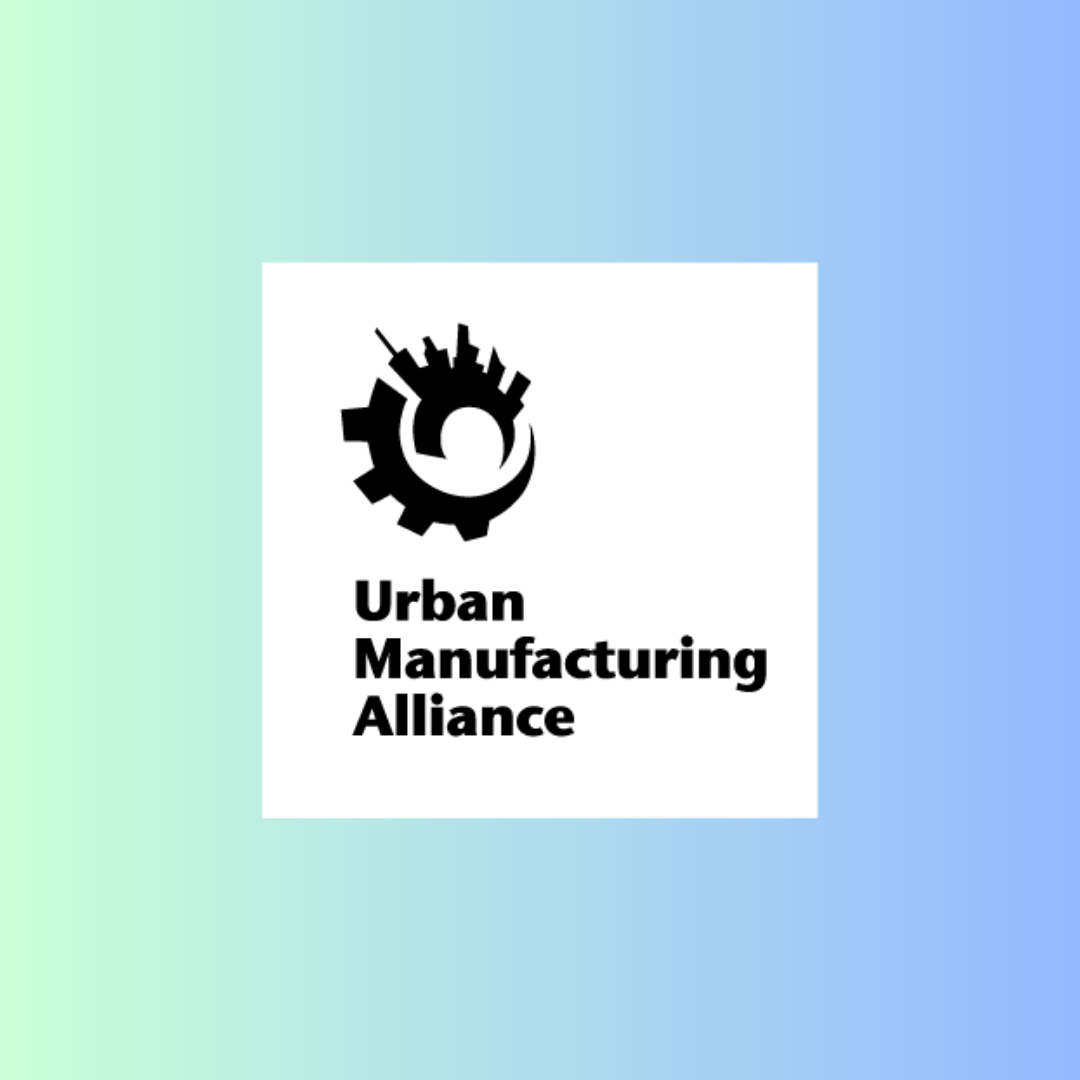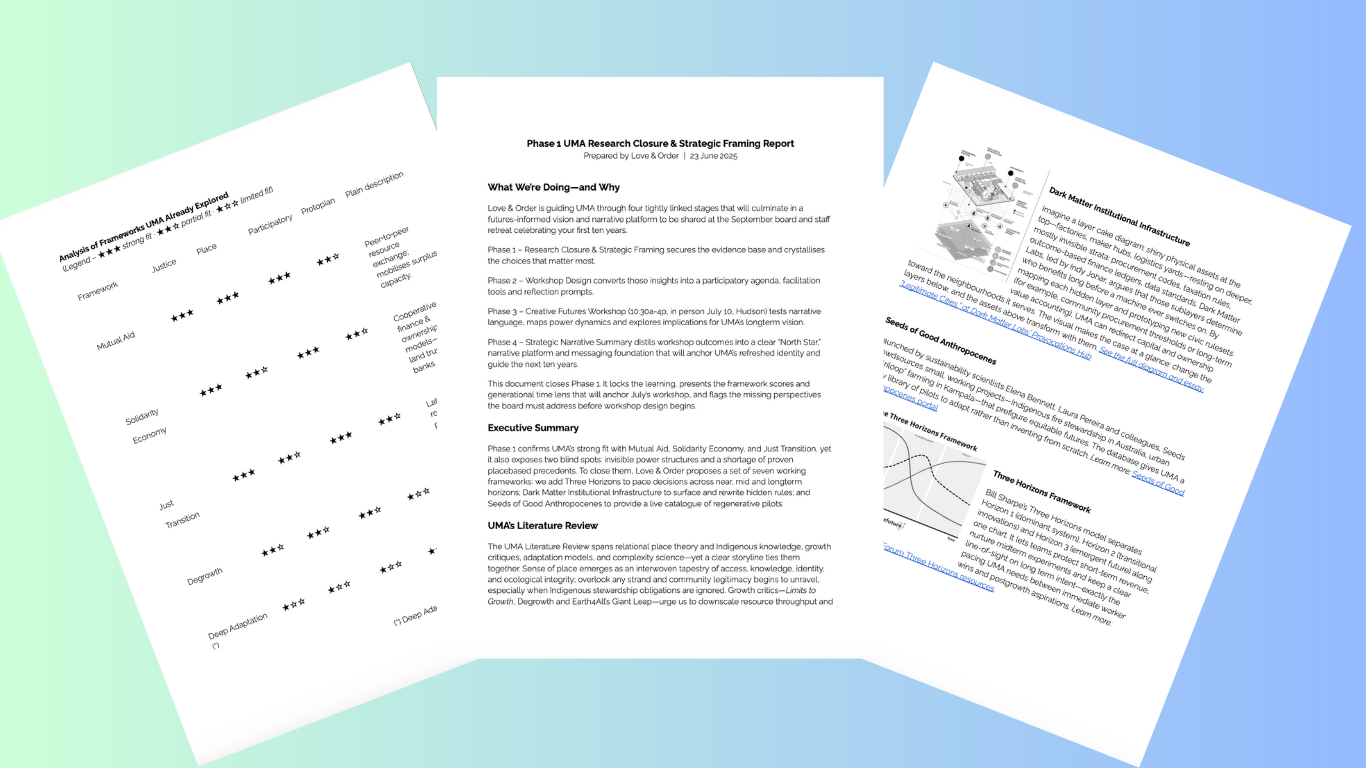Urban Manufacturing Alliance
Challenge
After a decade of advancing equitable manufacturing and community-based economic development, the Urban Manufacturing Alliance (UMA) reached a threshold moment. The organization had grown from a national network into a field builder, helping cities reimagine the role of manufacturing in creating just and resilient communities.
As UMA approached its tenth anniversary, the Co-Directors recognized that the next decade would require more than programmatic growth. They needed to evolve the organization’s identity to meet new economic, environmental, and cultural realities. What kind of future did UMA want to help build — and what kind of organization did it need to become to lead that change?
The leadership team invited Love & Order to design and facilitate a foresight process that could hold both the intellectual rigor and the creative imagination this transformation required. The goal was to develop a new strategic framework and a rearticulated mission and vision that would carry the organization into its next decade of impact.
Approach
Love & Order led UMA through a Creative Futures process — a methodology that combines strategic foresight, systems thinking, and collective imagination. The process unfolded over a series of sessions designed to expand the organization’s sense of possibility while grounding that imagination in practical strategy.
The work began with a Phase 1 discovery that synthesized UMA’s research and stakeholder insights through a Love & Order analytical lens. From that analysis, four evaluative principles emerged to guide the transformation: justice centered transformation, place rooted sufficiency, participatory imagination, and Protopian adaptability. These became the compass for every subsequent conversation and decision.
Service: Strategic Foresight and Transformation
Sector: Nonprofit, Leadership Team, Systems Change, Social Impact
In July, the leadership team gathered in Hudson, New York, for an immersive Creative Futures workshop. The experience wove together elements of the Inner Development Goals, the Collective Imagination Toolkit, and AstroFuturism — a Love & Order framework that invites participants to think across time scales and systems, from local communities to planetary futures.
The workshop balanced imagination with intention. It opened with grounding exercises that brought presence and reflection into the space, followed by Turn Back the Clock, which surfaced formative experiences of justice, belonging, and purpose. Participants then wrote Postcards from the Future, envisioning the worlds UMA could help create if its deepest values guided its path forward.
From there, the group engaged in The Circle of Intent and Circle of Care, exercises that translated those visions into organizational focus and responsibility. The session concluded with Three Horizons mapping, connecting short-term initiatives to long-term transformation.
Each exercise was designed to move the team from reflection to synthesis, translating imagination into strategic clarity.
Outcome
By the end of the Creative Futures process, UMA had articulated a new mission and vision that captured both its legacy and its next horizon. The organization’s identity had evolved from a network of practitioners to a movement stewarding the future of regenerative production.
Mission
Mechanism cultivates production ecosystems that safeguard the environment, steward shared resources, secure economic stability, and empower workers with safety, dignity, and agency. We partner with communities to transform manufacturing away from extractive models that drive inequality and depletion. In doing so, we lay the foundation for resilient places where people and production sustain each other.
Vision
We envision an economy where production ecosystems are guided by equity, care, and shared stewardship — an economy that strengthens communities, sustains local identity, restores balance with natural systems, and fosters resilience for generations to come.
These statements, co-created through foresight and collective imagination, expressed UMA’s emerging identity while setting the foundation for its transformation into a new organizational form.
In post-session reflections, participants described feeling grounded, inspired, and aligned. They spoke of the process as one that turned intuition into structure — giving language to values that had long guided the work but had not yet been fully named.
Reflection
The UMA foresight process revealed what becomes possible when imagination is treated as a strategic asset. By integrating futures thinking with the Inner Development Goals and the Collective Imagination Toolkit, Love & Order helped the leadership team see transformation not as a rebrand but as an evolution of consciousness, culture, and responsibility.
The use of AstroFuturism extended UMA’s perspective beyond immediate systems change to the larger question of what it means to design economies that honor both planetary and human well-being.
For Love & Order, this engagement exemplified the power of insight, foresight, and oversight — the triad that transforms vision into coherence and strategy into purpose.
UMA emerged from the process with clarity, conviction, and language for its next decade. The foresight work in Hudson laid the foundation for the organization’s next chapter, preparing the ground for the board retreat that would follow and the new identity it would soon assume.



